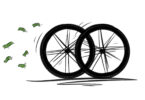Suplest Crosscountry Pro gravel shoes long-term review
Anything but inconspicuous, the matte-white Suplest Crosscountry Pro gravel shoes are hard to miss and promise to be the perfect gravel partner, particularly for short, high-speed rides. Are they comfortable enough for long bikepacking adventures? We put them to the test to find out.
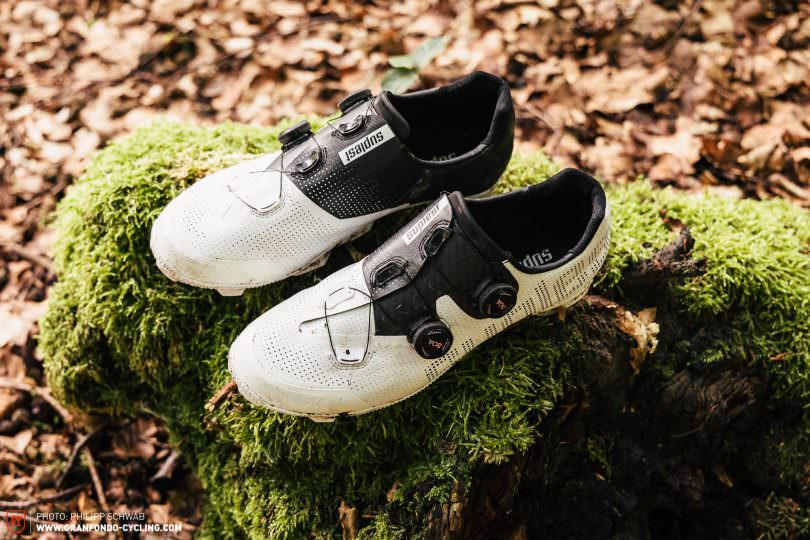
After testing the Suplest EDGE+ Road Pro shoes, which convinced us with their direct power transfer and high comfort, we were excited to test the Swiss brand’s gravel shoes. If you like white shoes, these will be love at first sight. Even the sole is white! The practicality of this for a gravel/off-road shoe is questionable and you’ll have to accept that they won’t stay sparkling white for very long. The Crosscountry Pro is the flagship model in the XC/gravel range, is compatible with Shimano and Crankbrothers cleats and costs € 359, with the pair weighing 880 g in size 45. If you don’t want to spend that much, you can find significantly more affordable alternatives in Suplest’s portfolio, like the Sport model for € 169 or the Performance model for € 249. That said, the pronounced tread of the Sport model in particular is better suited to mountain bike use. Can the flagship model keep its manufacturer’s promise and make riding that much more fun? Our tester and editor, Tobi, laced the white shoes to his feet on every gravel ride for three months to find out.
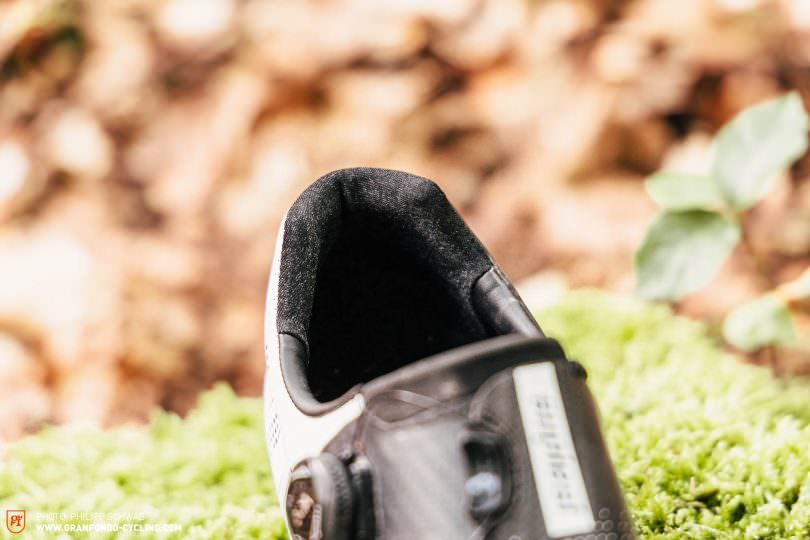
In the heel part of the Suplest Crosscountry Pro, a fabric is used that has fine barbs. This claws into the socks and effectively prevents you from slipping out of the shoe.
The fit of the Suplest Crosscountry Pro – Let’s wrap it up
The Crosscountry Pro is based on Suplest’s competition last. To accommodate the widest possible range of foot shapes and sizes, the tongue is constructed so that it wraps itself around the foot, adjusting the shoe volume as required. The top of the tongue is reinforced with a thin layer of carbon which is intended to evenly distribute the pressure of the BOA ratchet system. Suplest call this Carbonshield. The fastening system, consisting of two BOA IP1 dials, should offer a secure fit and even pressure distribution. During the test, the combination of BOA dials, tongue construction and the Carbonshield design performed convincingly. For slim to normal feet, the shoes can be ratcheted down enough to find a perfect and tight fit, while the construction also offers enough leeway to accommodate wider feet. Nonetheless, it’s clear that the fit is designed specifically for racing and maximum performance.
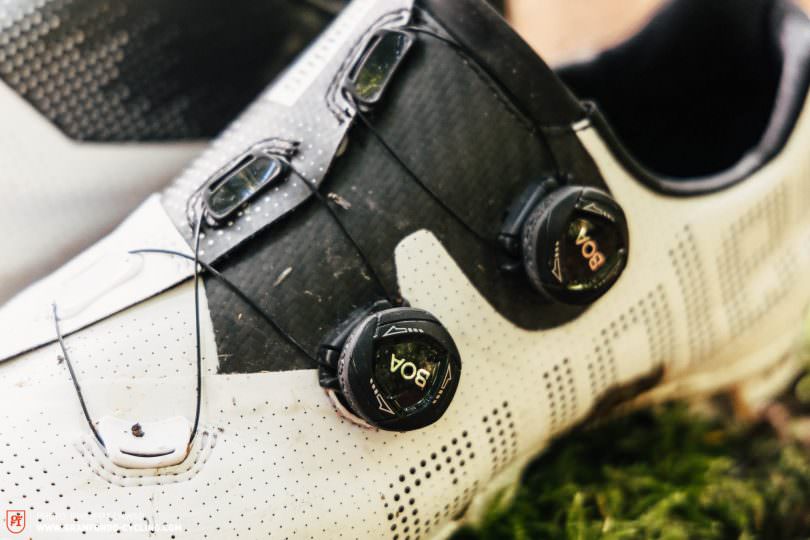
The tongue construction is reminiscent of a wrap and fits comfortably around a variety of different foot shapes. With the BOA-Fit system, you can also quickly and easily tighten or widen the shoes while riding.
Power transmission of the Suplest Crosscountry Pro – No loitering
Suplest have equipped the Crosscountry Pro with SOLESTAR insoles, which promise comfort, stability and maximum power transfer. The insoles are raised on the side of the arches, providing excellent support and delivering on this promise. The carbon Crosscountry outsoles are extremely stiff, further underlining the shoes’ efficient power transfer. The Suplest shoes reveal themselves as absolute competition weapons, ready to tackle the next finish line sprint where every watt counts.
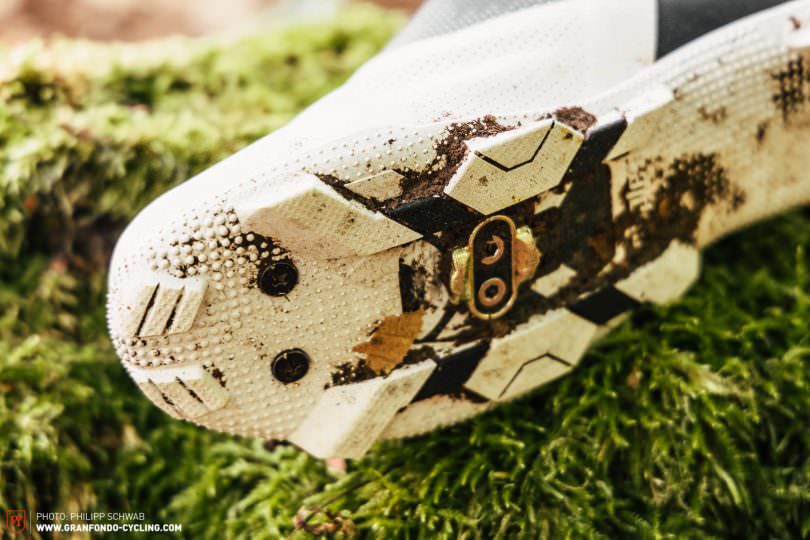
The outsole, developed in collaboration with SUPtraction, provides good grip on slippery surfaces. For stability on soft terrain, you can also screw in studs at the front of the sole.
The comfort of the Suplest Crosscountry Pro – Hard, harder, Crosscountry Pro
First off, the Crosscountry Pro is definitely not the most comfortable shoe in the Swiss brand’s portfolio. That said, its rubber sole, developed in collaboration with SUPtraction, offers a lot of grip on slippery surfaces. If you tend to ride in off-road terrain, we recommend screwing the supplied studs into the toe area for even more grip. The upper features a rubber lip where it meets the foot, making for good wearing comfort without creating any hot spots or pressure points. The non-slip fabric on the inside of the heel cap is another practical feature, keeping your feet securely in position. However, as already mentioned, the fit is designed for all-out racing and ultimate stiffness, which comes at the detriment of some comfort. If you’re looking for shoes for long and relaxed (bikepacking) tours, we recommend looking for a less performance-oriented model.
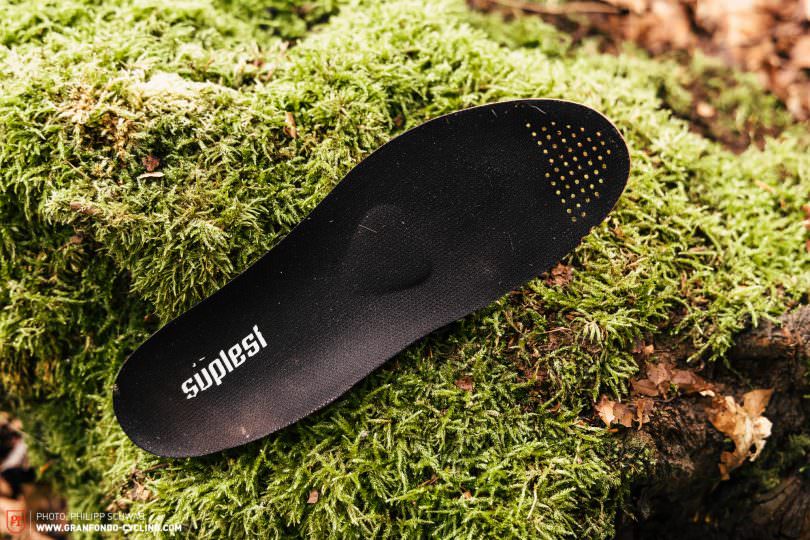
The SOLESTAR insole of the Suplest Crosscountry Pro fits seamlessly into the very good overall package of the shoe. It is pulled far up on the side of the arch of the foot and offers very good support.

A thin carbon layer is used for the upper side of the shoe. The so-called Carbonshield is intended to distribute the pressure of the BOA fasteners evenly.
Suplest Crosscountry Pro conclusion
With the Crosscountry Pro, Suplest offer a very white, all-round package for full throttle rides or gravel races where maximum efficiency is crucial. The shoes convinced us with their closure mechanism and supportive insole. However, if you’re looking for very light shoes for long and relaxed rides, you’ll do better looking for more comfortable alternatives. However, Tobi loves them for his finish line sprints.
Tops
- closure offers an excellent fit for a wide range of foot shapes
- maximum power transfer
- good looking
- supportive insole
Flops
- the white looks great but it's impractical for a gravel shoe
- lacks comfort for long journeys
- not the lightest
For more information about the Suplest Crosscountry Pro visit world.suplest.ch
Did you enjoy this article? If so, we would be stoked if you decide to support us with a monthly contribution. By becoming a supporter of GRAN FONDO, you will help secure a sustainable future for high-quality cycling journalism. Click here to learn more.
Words: Philipp Schwab, Tobias Hörsch Photos: Tobias Hörsch

